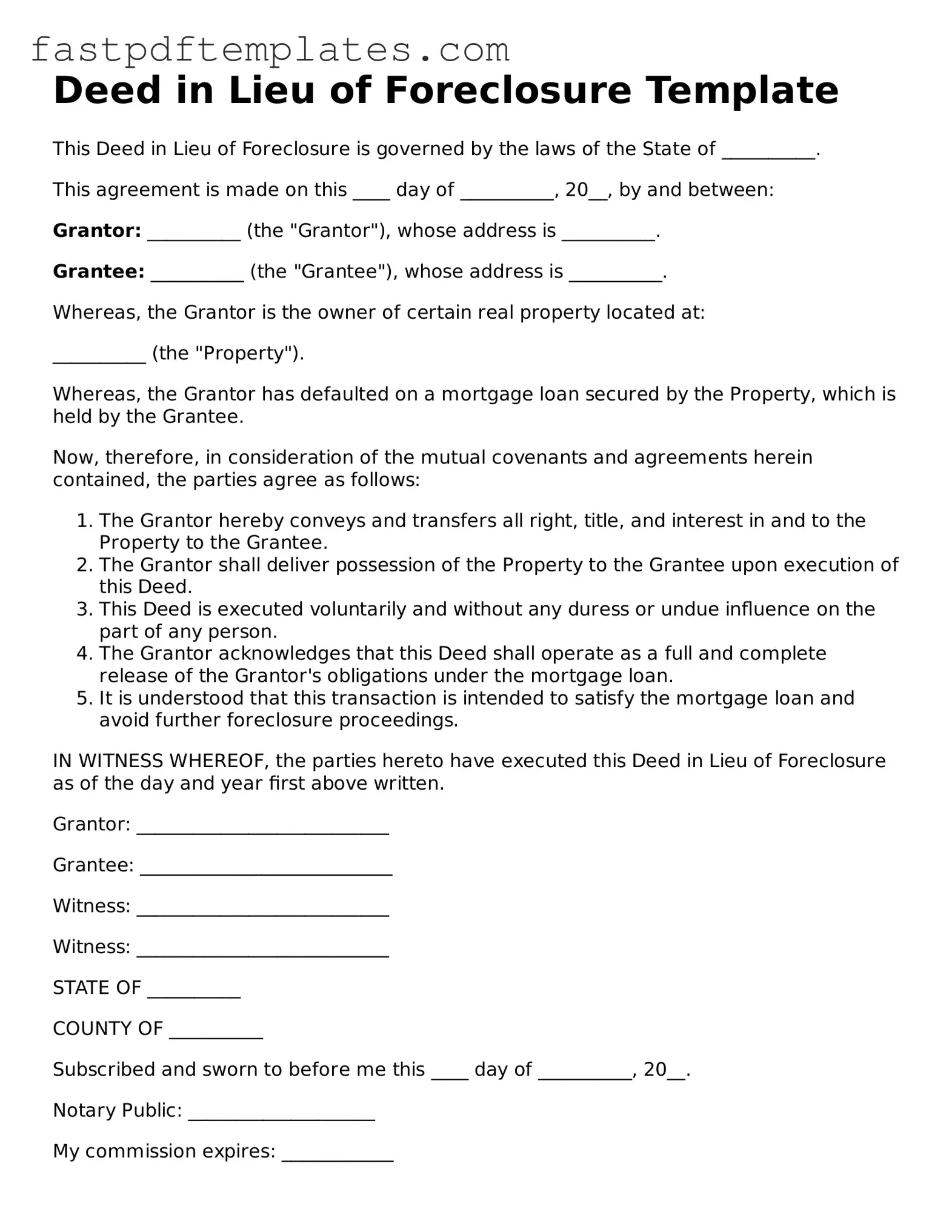Deed in Lieu of Foreclosure Template
This Deed in Lieu of Foreclosure is governed by the laws of the State of __________.
This agreement is made on this ____ day of __________, 20__, by and between:
Grantor: __________ (the "Grantor"), whose address is __________.
Grantee: __________ (the "Grantee"), whose address is __________.
Whereas, the Grantor is the owner of certain real property located at:
__________ (the "Property").
Whereas, the Grantor has defaulted on a mortgage loan secured by the Property, which is held by the Grantee.
Now, therefore, in consideration of the mutual covenants and agreements herein contained, the parties agree as follows:
- The Grantor hereby conveys and transfers all right, title, and interest in and to the Property to the Grantee.
- The Grantor shall deliver possession of the Property to the Grantee upon execution of this Deed.
- This Deed is executed voluntarily and without any duress or undue influence on the part of any person.
- The Grantor acknowledges that this Deed shall operate as a full and complete release of the Grantor's obligations under the mortgage loan.
- It is understood that this transaction is intended to satisfy the mortgage loan and avoid further foreclosure proceedings.
IN WITNESS WHEREOF, the parties hereto have executed this Deed in Lieu of Foreclosure as of the day and year first above written.
Grantor: ___________________________
Grantee: ___________________________
Witness: ___________________________
Witness: ___________________________
STATE OF __________
COUNTY OF __________
Subscribed and sworn to before me this ____ day of __________, 20__.
Notary Public: ____________________
My commission expires: ____________
